|
Almost the entire cave is on its entrance filled with sediments. The youngest strata is dated back 100 000 years. On the northern side, 200 m of sediments were taken away to open a walking passage. Stalactites are decorating the ceiling and partially filling the 0.5 – 1 m high gap.
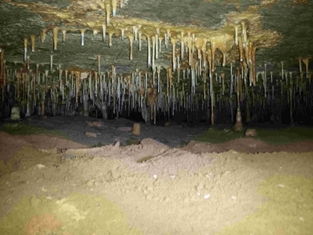 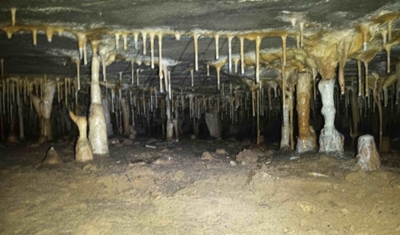
The width of the cave, nowadays filled, is up to 20 m and the sediments reach a depth of 8 m.
The aim of our measurement was to map the cave’s course to the edge of the field situated on the surface. Geophysicist Dr. Pavel Kalenda took part of the measurements as well. He was doing gravity survey for mapping the cave system there, some time ago. We wanted to compare this measurement to ours. The ceiling is around 40 m below the surface. We used GPR and 6 m long antennas of 25 MHz frequency. They were towed by two cars. Below is a picture of the GPS points trajectory, which covered the total length of 8.5 km and nearly 2 hours of measurement. We gathered over 1 GB of GPR data.
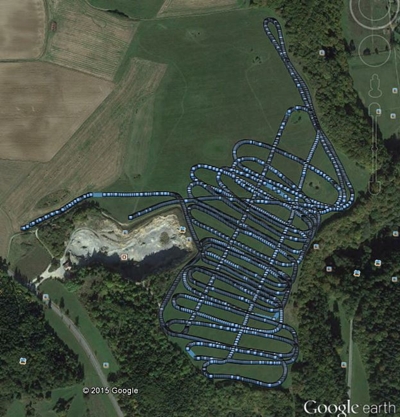
Selected 33 radargrams depict not only the course of the Holstein cave but also its side caves and other caverns, which are not connected with this cave. Some of them appear to be even larger than Holstein cave, which is marked by arrows on the figure below.
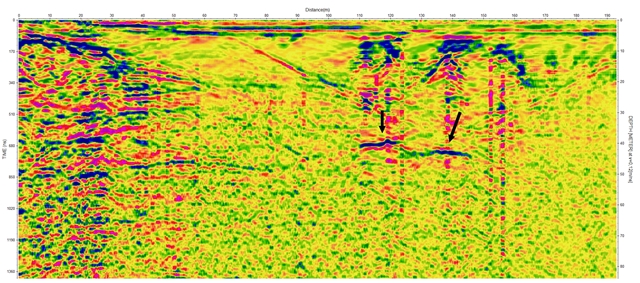
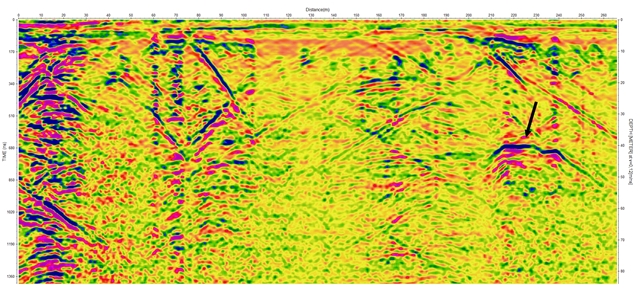
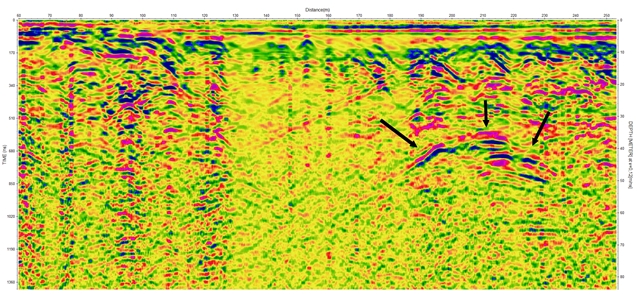
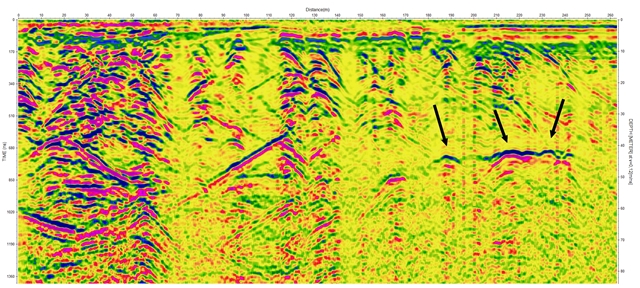
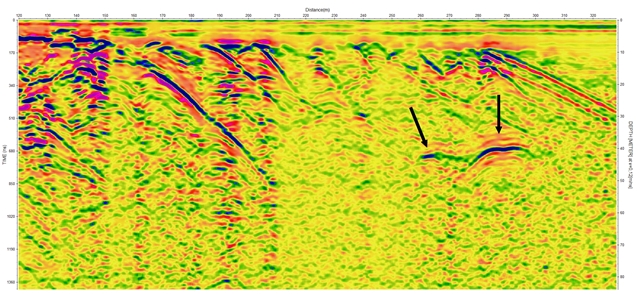
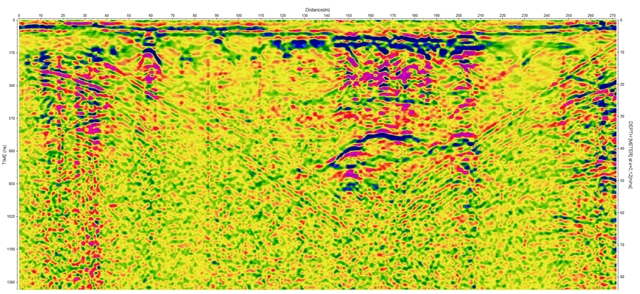
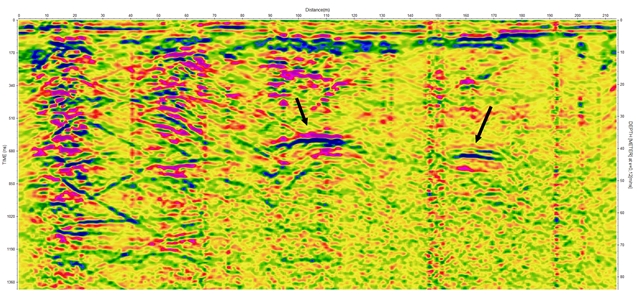
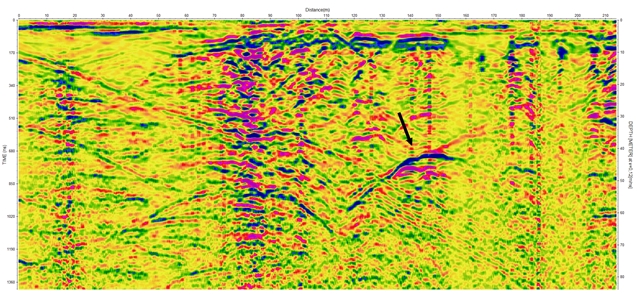
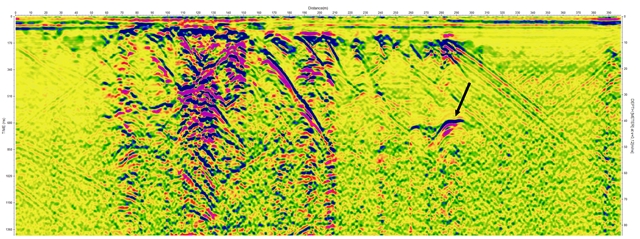
Last profile (see above), located outside of the cave area, follows the surroundings of the Mala Dohoda quarry. It is situated on the left on the figure with the profiles map (see on top). In the centre part of the picture, there are lot of caverns and on the right a continuous reflection in the length of 280 m and depth of 40 m appears – see the detail on the picture below.

A red line on the picture below outlines the reflections from Holstein cave, showed on the map. The point labels mark the depth from the surface.
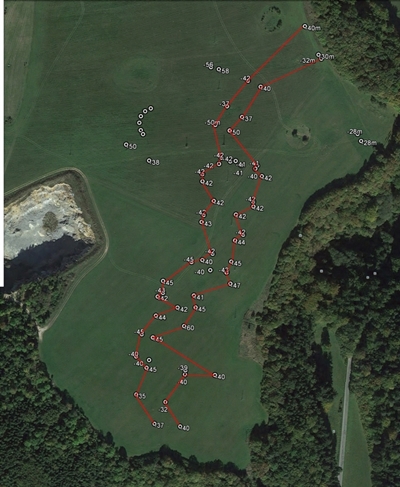
The cave’s course corresponds to the results of gravity survey, led by Dr. Kalenda. But… the gravimetric measurements took 15 days.
GPR measurements in parallel profiles are thus capable of fast and effective mapping of voids and caverns courses underground. It provides the information about the width, the shape of the ceiling and the depths below the surface. Moreover, GPR records also other reflections and uncover small anomalies, which cannot be revealed by the gravity method. Dr. Kalenda has found two side inflows to the Holstein cave on the detailed radargrams.
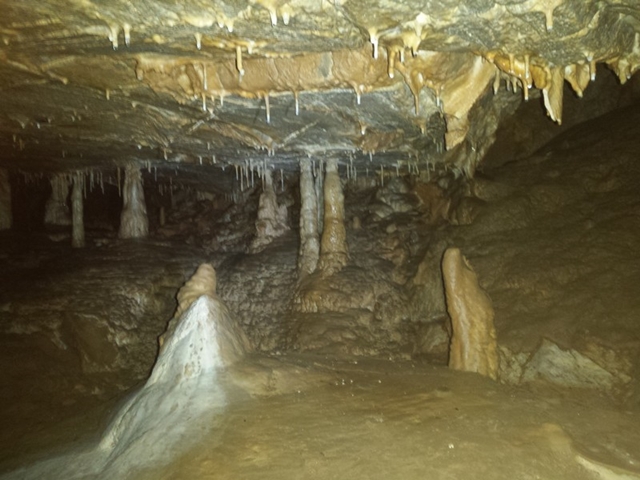
|